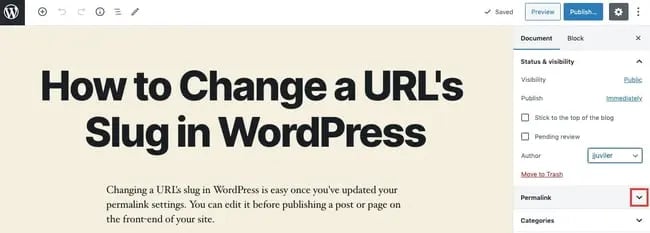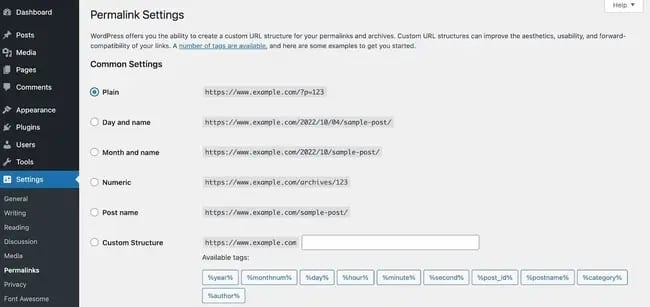Unraveling the mystery of URL slugs: How a few words can make or break your website’s visibility and success.

Image courtesy of via DALL-E 3
Table of Contents
Introduction to URL Slugs
In today’s digital age, navigating the vast world of the internet can sometimes feel like searching for a needle in a haystack. But fear not, because we have a key tool that helps make this search easier: URL slugs. But what exactly are URL slugs and why are they important for websites? Let’s break it down in simple terms.
What is a URL?
Before we dive into URL slugs, it’s essential to understand what a URL is. URL stands for Uniform Resource Locator, which is basically the web address of a particular website or webpage. Think of it as the virtual address that directs you to a specific place on the internet. Without URLs, we would be lost in the vast online world!
What is a Slug?
Now, let’s talk about slugs. In the context of a URL, a slug is a component that identifies a specific page on a website. It usually consists of a few words that describe the content of the page. Slugs play a crucial role in helping users and search engines understand what a webpage is about before even clicking on the link.
Why Are URL Slugs Important?
URL slugs play a crucial role in the world of the internet, impacting both web users and search engines. Understanding why URL slugs are important can help you navigate the online realm more effectively.
For Users
Imagine you’re trying to find a specific page on a website. A clear and simple URL slug can make this process much easier. A URL slug that is easy to read and remember can help users quickly identify the content they are looking for. It’s like having a map that guides you straight to your destination without any detours or confusion.
For Search Engines
Search engines like Google use URL slugs to categorize and rank web pages. When a slug contains relevant keywords and accurately describes the content of a page, it becomes easier for search engines to understand what the page is about. This, in turn, can boost the page’s ranking in search results, making it more visible to users searching for related topics.
How to Create a Good URL Slug
A URL slug should be short and easy to understand. For example, instead of having a long and complicated slug like “website.com/how-to-find-important-information,” it’s better to use “website.com/information-guide.” Short slugs are easier to remember and also look cleaner in search engine results.

Image courtesy of blog.hubspot.com via Google Images
Use Keywords
Keywords play a crucial role in URL slugs. Including relevant keywords in your slug can help improve your website’s search engine ranking. For instance, if your page is about healthy recipes, a good slug could be “website.com/healthy-recipes” or “website.com/easy-healthy-meals.”
Avoid Special Characters
Special characters like %, $, @, &, and # should be avoided in URL slugs as they can cause issues with how the link is read by search engines and users. Stick to using letters, numbers, hyphens, and underscores to separate words in your slug. For instance, “website.com/summer-vacation-plans” is a good slug, while “website.com/summer!vacation!plans” is not recommended.
Examples of Good and Bad URL Slugs
Good URL slugs are essential for helping users and search engines understand the content of a web page. Here are some examples of effective URL slugs:
- Good Example 1: www.example.com/about-us
- Good Example 2: www.example.com/best-chocolate-cake-recipe
This slug clearly indicates that the page is about the company’s information. It is concise, easy to read, and contains relevant keywords for SEO.
This slug is descriptive and contains relevant keywords that users might search for. It gives a clear idea of what the page is about.
Bad URL Slugs
On the other hand, bad URL slugs can confuse users and negatively impact a website’s SEO. Here are examples of ineffective URL slugs:
- Bad Example 1: www.example.com/page123456
- Bad Example 2: www.example.com/8567-abc-xy
This slug is generic and does not provide any information about the page’s content. It is difficult for users and search engines to understand.
This slug is filled with random numbers and letters that do not convey any meaningful information. It lacks relevance and makes it hard for users to know what the page is about.
How to Change a URL Slug
Changing a URL slug can be necessary to improve the visibility and accessibility of your webpage. Here’s how you can easily update your URL slug if needed:

Image courtesy of blog.hubspot.com via Google Images
Using a CMS
If your website is built on a platform like WordPress or Joomla, changing a URL slug is a straightforward process. Simply log in to your CMS dashboard, locate the page whose slug you want to change, and edit the URL field. Be sure to choose a new slug that accurately reflects the content of the page and includes relevant keywords for better search engine optimization.
Manually Changing Slugs
If you manage a website without a CMS or prefer to update slugs manually, you can do so by accessing the code of your website. Locate the page whose slug you want to change, identify the corresponding URL in the code, and replace the existing slug with the new one. Make sure to test the new URL to ensure it works correctly and redirects users to the intended page.
Common Mistakes When Creating URL Slugs
One common mistake people make when creating URL slugs is using too many words. A slug should be concise and easy to read, not a long string of text that is hard to remember. For example, instead of a slug like “website.com/best-tips-for-creating-effective-url-slugs,” a more effective version would be “website.com/url-slug-tips.”
Ignoring Keywords
Another mistake to avoid is ignoring keywords when crafting a URL slug. Keywords play a crucial role in helping search engines understand the content of a page. By including relevant keywords in your slug, you can improve your website’s search engine optimization (SEO) and make it easier for users to find your content.
Using Irrelevant Words
It’s important to ensure that the words you use in your URL slug are directly related to the content of the page. Using irrelevant words can confuse both search engines and users, leading to a negative impact on your website’s visibility and user experience. Make sure that your slug accurately reflects the topic or focus of the page it represents.
Advanced Tips for URL Slugs
One of the advanced tips for optimizing your URL slugs is to use hyphens (-) instead of underscores (_) to separate words. Search engines like Google interpret hyphens as spaces, which makes it easier for them to understand the words within your URL. For example, if you have a slug for a web page about healthy recipes, using hyphens like “healthy-recipes” is more beneficial than “healthy_recipes”.

Image courtesy of blog.hubspot.com via Google Images
Keeping It Relevant
Another crucial aspect of advanced URL slug optimization is to ensure that your slug remains closely related to the content of your webpage. Search engines value relevance, so having a slug that accurately reflects the topic of your page can improve your search engine ranking. For instance, if your page is about gardening tips, a relevant slug like “gardening-tips” will enhance the overall optimization of your website.
Benefits of Good URL Slugs
Good URL slugs play a crucial role in boosting a website’s search engine ranking. Search engines like Google use these slugs to determine the content of a page and its relevance to specific search queries. By creating descriptive and keyword-rich slugs, you increase the chances of your website appearing higher in search results when users look for related information. This not only helps drive more traffic to your website but also enhances its visibility online.
Better User Experience
Having clear and concise URL slugs contributes to a better user experience on your website. When users see a URL that accurately reflects the content of the page they are about to visit, it instills confidence and helps them understand what to expect. Additionally, easily readable slugs make it simpler for users to remember and share links, improving the overall navigation experience. By focusing on creating user-friendly slugs, you can enhance usability and engagement on your website.
Conclusion
In this article, we have learned all about URL slugs and why they are essential for websites. A URL slug is a simple, easy-to-read part of a web address that helps users and search engines navigate the internet efficiently.

Image courtesy of www.dcpweb.co.uk via Google Images
Key Points to Remember:
1. A URL is the web address that directs you to a specific website.
2. A slug is the user-friendly part of a URL that identifies a particular page on a website.
3. Good URL slugs are important for both users and search engines as they help improve search rankings and enhance the user experience.
4. Creating a good URL slug involves keeping it short and simple, using relevant keywords, and avoiding special characters.
5. Examples of good and bad URL slugs demonstrate the impact of effective slug creation.
6. To change a URL slug, you can use a CMS or manually update it in your website’s code.
7. Common mistakes to avoid when creating URL slugs include using too many words, ignoring keywords, and including irrelevant terms.
8. Advanced tips like using hyphens and keeping slugs relevant can further optimize your website’s URL structure.
9. The benefits of good URL slugs include improved search ranking and a better user experience for website visitors.
Remember, creating good URL slugs is not only beneficial for your website but also for those who visit it. By following the tips and best practices outlined in this article, you can ensure that your web pages are easily accessible and recognizable on the internet.
Want to turn these SEO insights into real results? Seorocket is an all-in-one AI SEO solution that uses the power of AI to analyze your competition and craft high-ranking content.
Seorocket offers a suite of powerful tools, including a Keyword Researcher to find the most profitable keywords, an AI Writer to generate unique and Google-friendly content, and an Automatic Publisher to schedule and publish your content directly to your website. Plus, you’ll get real-time performance tracking so you can see exactly what’s working and make adjustments as needed.
Stop just reading about SEO – take action with Seorocket and skyrocket your search rankings today. Sign up for a free trial and see the difference Seorocket can make for your website!
Frequently Asked Questions (FAQs)
What if I need to change my URL slug?
If you find yourself in a situation where you need to change your URL slug, don’t worry! It’s actually quite simple to do. First, you’ll want to log into your website’s Content Management System (CMS) if you have one, such as WordPress. From there, you can navigate to the section where you can edit your page or post, and look for the option to change the slug. Once you’ve updated it to your liking, be sure to save your changes. If you’re not using a CMS and need to update the slug manually in your website’s code, you can do so by locating the URL structure in your backend files and making the necessary adjustments. Remember to test the new slug to ensure it works properly.
How long should my URL slug be?
When it comes to the length of your URL slug, shorter is always better! Aim to keep your slugs concise and to the point. Ideally, your slug should be no more than a few words long. Long and complicated slugs can be difficult for users to read and remember, as well as for search engines to understand. By keeping your URL slug short and sweet, you’ll create a better user experience and improve your chances of ranking higher in search results.







